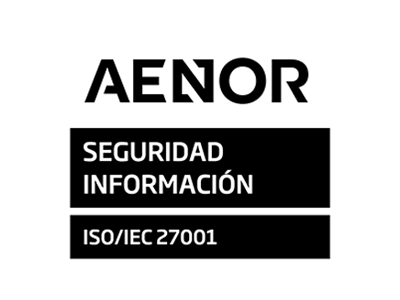Social Listening vs. Social Monitoring: What Are the Differences?
29th March 2024

Social listening and social monitoring are two ways that businesses can track the conversations happening around their brand. They are often used interchangeably, but they are two distinct processes. Uncovering the difference between the two can help businesses gain a better understanding of their target audience, create more effective campaigns, and ultimately boost their bottom line. In this post, we’ll be taking a deep dive into social listening and social monitoring, their respective benefits, and the differences between them.
The Differences Between Social Listening and Social Monitoring
Although social listening and social monitoring are often used interchangeably, there are distinct differences between the two terms. Social monitoring is more passive and involves tracking conversations, and responding to feedback to generate insights into user sentiment and preferences. Think of it as enjoying a marathon of your favorite tv show, you have to be continuously observing what’s happening without averting your eyes. While social listening is a more active approach in which businesses are continuously using these insights to enhance their business decisions. You have to be thinking of ways to utilize key insights, improve strategies, and implement solutions.
Another key difference is the type of data that is collected. With social listening, businesses are collecting qualitative data that is more focused on user sentiment and preferences. With social monitoring, businesses are collecting quantitative data such as the number of mentions, likes, shares, etc.
Social Listening
At its core, social listening is an analytical process. It involves paying close attention to what customers are saying and understanding the insights extracted. From this, you can gain a broader perspective and dedicate efforts to improving strategies.
Social Monitoring
Social monitoring focuses on enhancing engagement. It involves watching and keeping track of the conversations that are taking place on social media platforms, to be able to react appropriately.
Differences in Utilizing Social Listening and Social Monitoring
Both social listening and social monitoring have specific purposes and values. Monitoring is a short-term solution that involves a reactive process that occurs on a micro scale, while social listening is a long-term solution involving a proactive process on a macro scale.
Key Characteristics of Social Listening
Scale: Social listening occurs on a macro scale. It focuses on data from a wide range of sources and conversations about how your products, services, brand, representatives, and competitors are being discussed. Businesses can gain valuable insights into perceptions, events, trends, markets, strengths, and weaknesses.
Goals: A diverse set of goals focused on making use of data analysis. It involves gaining insights and an understanding of customer sentiment and industry trends.
Approach: Proactive and broader focus on analyzing large amounts of data to identify patterns and trends
Tools: Involves more advanced analytical tools, such as natural language processing and sentiment analysis. Social listening may involve third-party monitoring tools that can collect data from a wide range of sources.
Key characteristics of Social Monitoring
Scale: Social monitoring occurs at a micro level, with a focus on specific mentions of a brand or product.
Goals: Social monitoring goals are specific. They focus on conversion, and customer interaction, as well as managing your brand’s reputation and customer service.
Approach: Reactive and narrower focus on real-time tracking and responding to mentions of a brand or product.
Tools: Relies more heavily on social media management tools to track and respond to mentions. Social monitoring is typically done using the native tools of social media platforms or social media management tools.
The Importance of Understanding the Differences
It’s important to be aware of the differences between social listening and social monitoring in order to utilize them effectively. By understanding the characteristics and intent of each, you can more accurately identify the type of data best suited to their needs and utilize social media in the most effective way. For example, if a business is only using social listening, it may be missing out on valuable opportunities to engage with users and build relationships. On the other hand, if a business is only using social monitoring, it may be missing out on valuable insights to improve marketing strategies.
Benefits of Social Listening
1. Improve customer satisfaction
By acting on what is being said about your brand by responding to feedback, you have more insight into how to provide better customer service, which in turn improves customer satisfaction. You can understand what type of service your particular customers need, and you can reconnect with potential customers.
2. Understand your audience
Social listening provides valuable insights into your target audience, including their preferences, pain points, and motivations. By understanding your audience better, you can create more effective marketing campaigns and develop products and services that meet their needs.
3. Identify potential customers
Social listening allows you to identify potential customers who may be interested in your products or services but have not yet engaged with your brand. By understanding what is being said about your brand and why people are engaging with it, you can tailor your messaging and outreach to better connect with these potential customers.
4. Understand customer sentiment
Social listening allows you to gain insight into customer sentiment, how your brand is perceived, and how your marketing efforts are resonating with your target audience.
5. Enhance brand reputation
By having more awareness of the sentiment toward your business, you can understand the essential motivators that drive people to purchase your products and services. You can identify negative sentiments and quickly address any issues or concerns that may be impacting your reputation. Additionally, by understanding what is driving positive sentiment, you can amplify those messages and build a stronger brand image.
6. Discover competitors
By monitoring your competitors on social media, you can identify areas where you can differentiate yourself and develop a competitive advantage.
Benefits of Social Monitoring
1. Answer customer concerns
Social monitoring allows you to track mentions of your brand and quickly respond to customer concerns or complaints, providing better customer service and improving customer satisfaction.
2. Discover the latest trends
Stay up to date on the latest trends and conversations in your industry, providing valuable insights that can inform your marketing and product development strategies.
3. Monitor competitors
Keep tabs on your competitors, monitoring their social media activity and tracking their brand reputation.
4. Identify influencers
Identify influencers who may be interested in your brand or who may be able to help promote your products or services.
5. Share customer feedback
Social monitoring allows you to track customer feedback and share it with your team. This can later help to inform product development and customer service strategies.
6. Stay ahead of potential crises
Social monitoring allows you to track mentions of your brand and identify potential issues or crises before they escalate, giving you the opportunity to address them proactively and minimize their impact.
Why AI is Important in Social Listening and Social Monitoring?
With the volume of social media conversations and interactions increasing every day, it can be challenging to keep up with all the data and extract meaningful insights. This is where AI comes in. AI-powered tools can automate the process of social listening and social monitoring, making it easier to analyze large volumes of data.
AI-powered tools can help brands track and analyze customer conversations and sentiments, monitor brand mentions and industry trends, and identify opportunities for engagement and support. These tools can also help brands track and respond to social media crises quickly.
Another advantage of using AI-powered tools for social listening and social monitoring is their ability to provide real-time insights. This is especially important in today’s fast-paced digital environment, where brands need to respond quickly to customer feedback and market trends to stay competitive.
Conclusion
In conclusion, social listening and social monitoring are two essential practices in social media management. The benefits of social listening and social monitoring are significant for any business looking to improve its brand reputation and stay ahead of its competitors. While social listening helps brands understand their reputation, customer satisfaction, and market trends, social monitoring helps brands identify opportunities for engagement, customer support, and crisis management. Both practices require a considerable amount of data analysis. So, by leveraging an AI-powered social listening solution, businesses can gain even more valuable insights and make data-driven decisions that can ultimately lead to success.
If you’re interested in exploring an AI-powered social listening solution, take a look at our platform and see how it can help take your social media strategy to the next level.
Ready to see what we can do for you?
In the right hands, artificial intelligence can take human performance to a hitherto unimaginable level. Are you ready for evolution?




